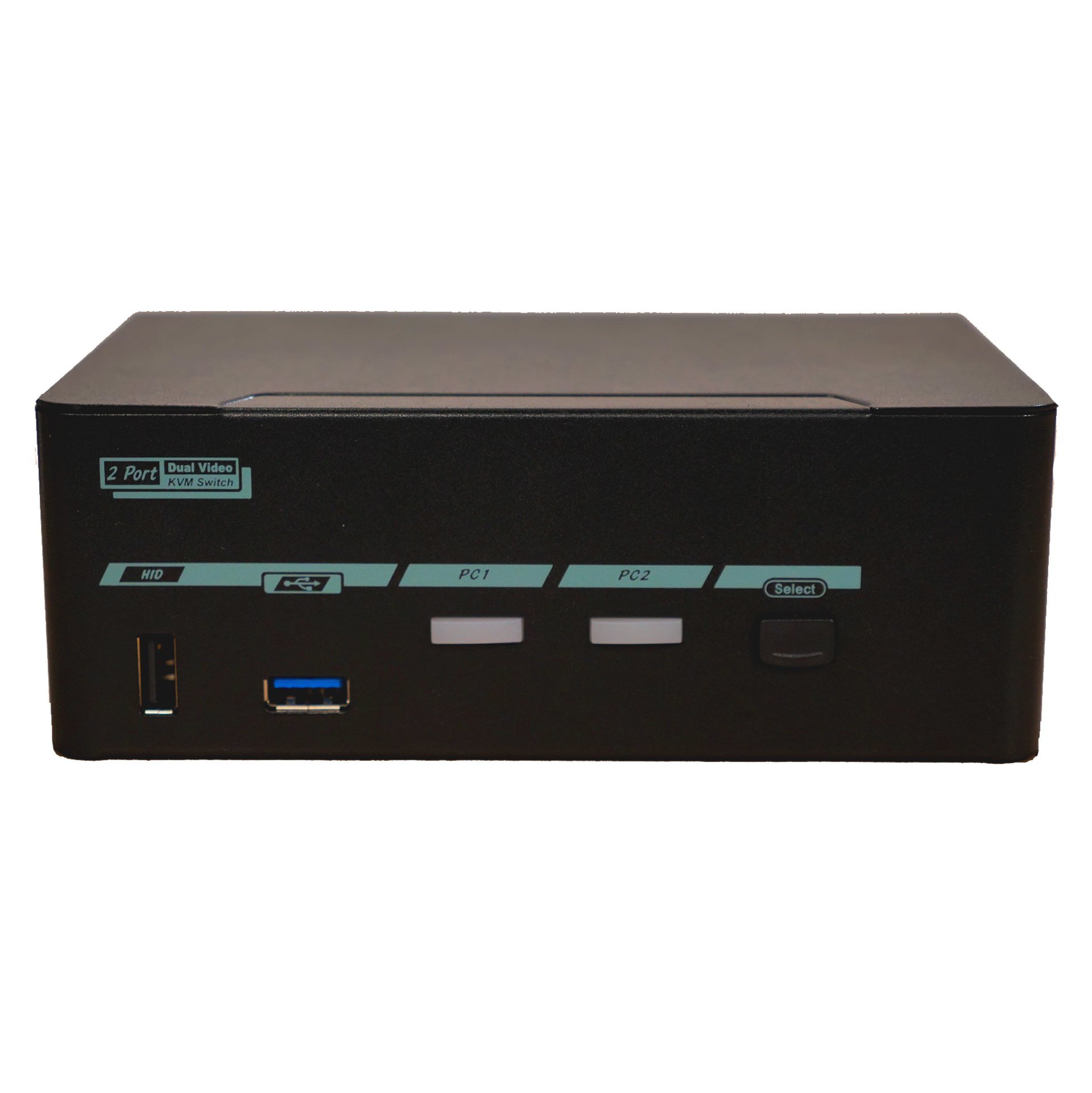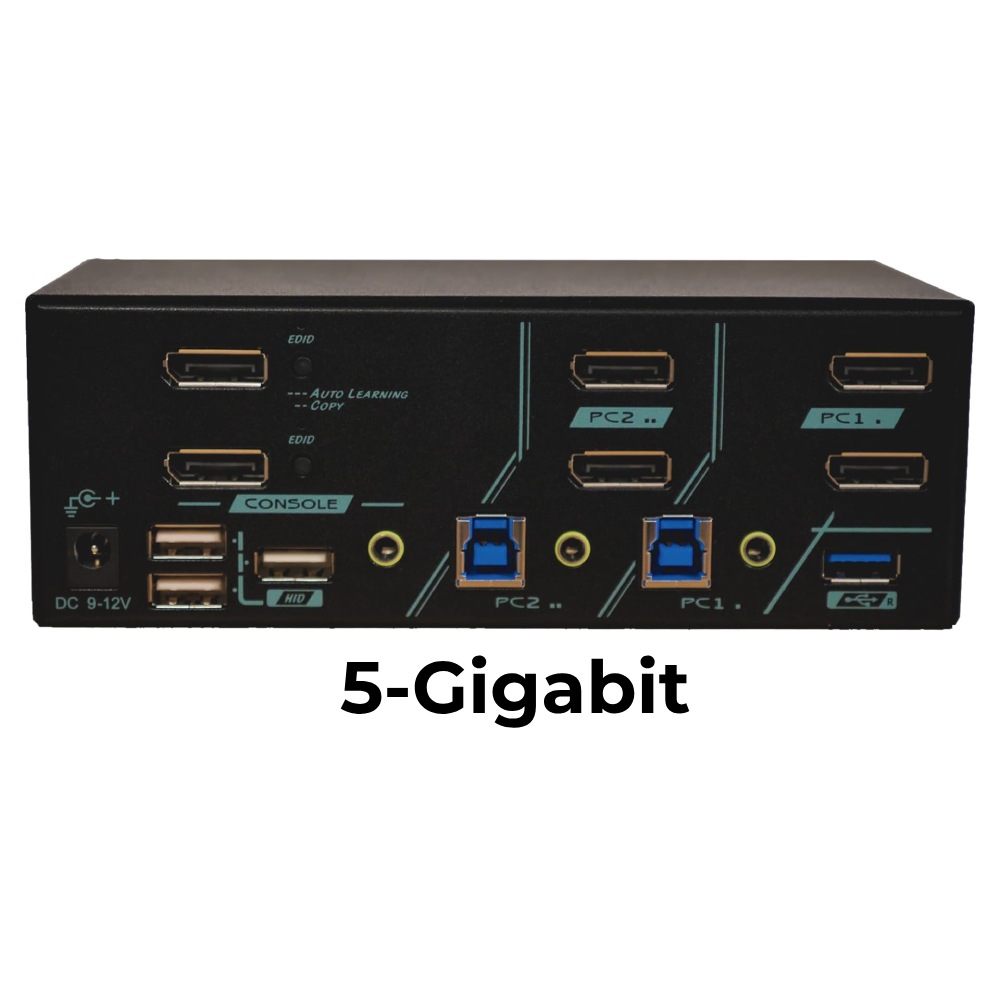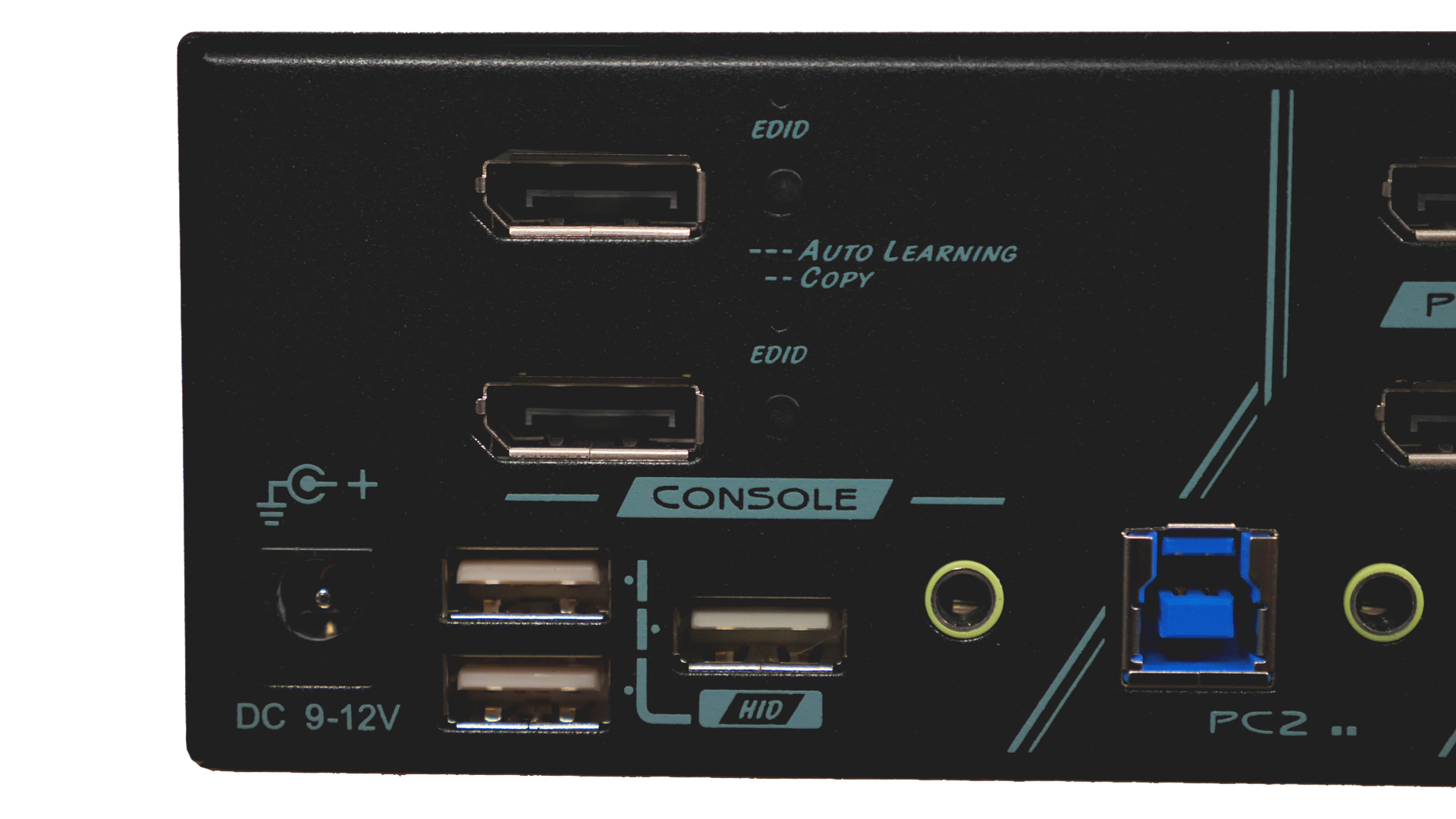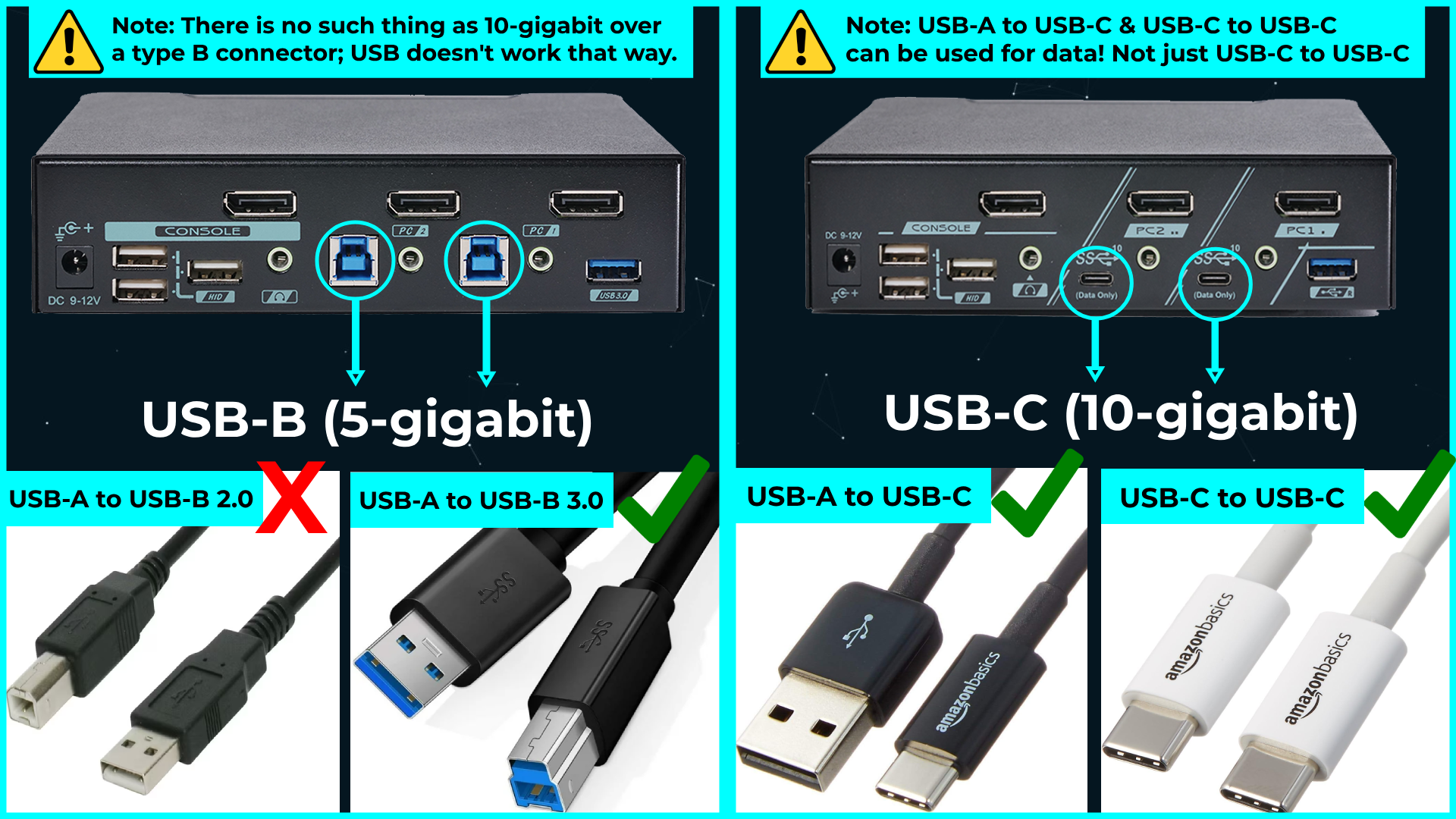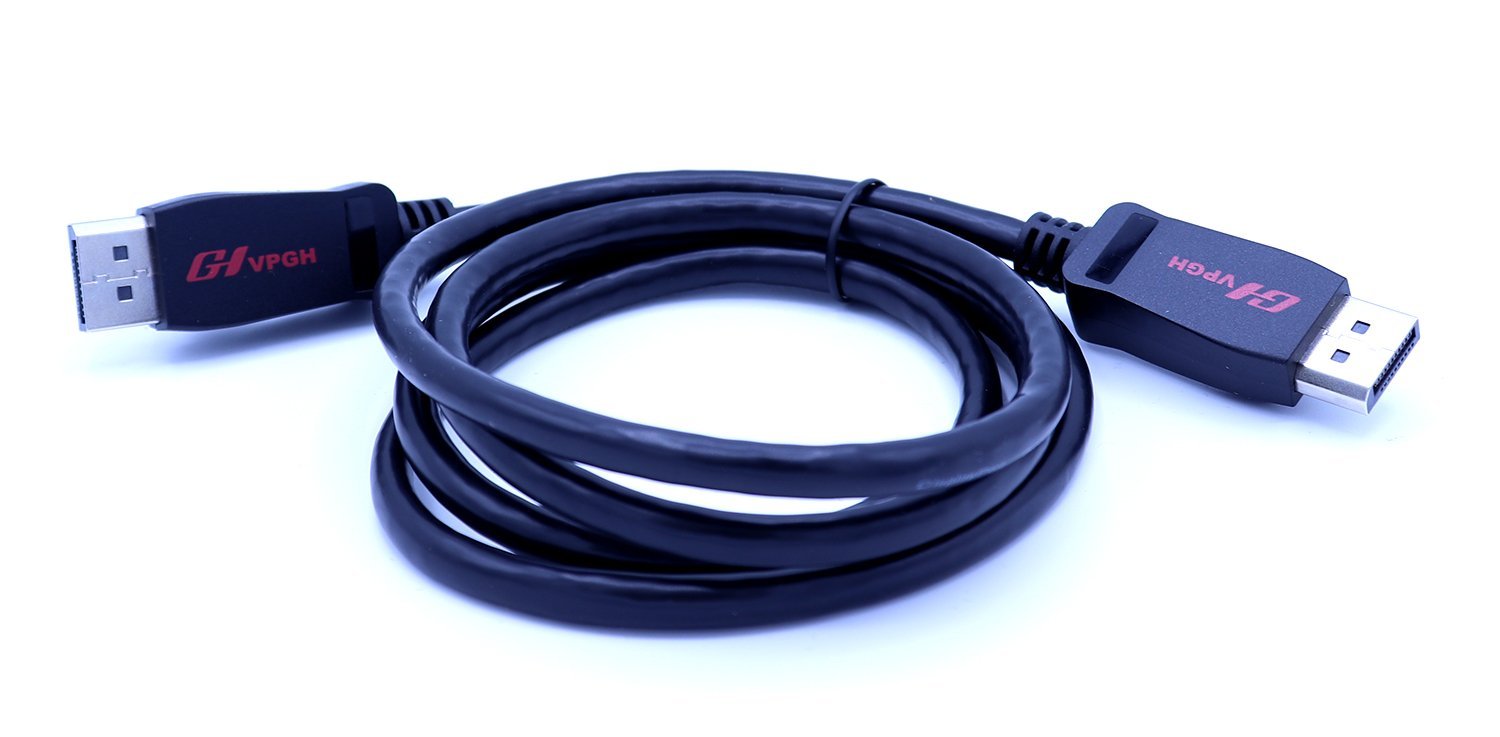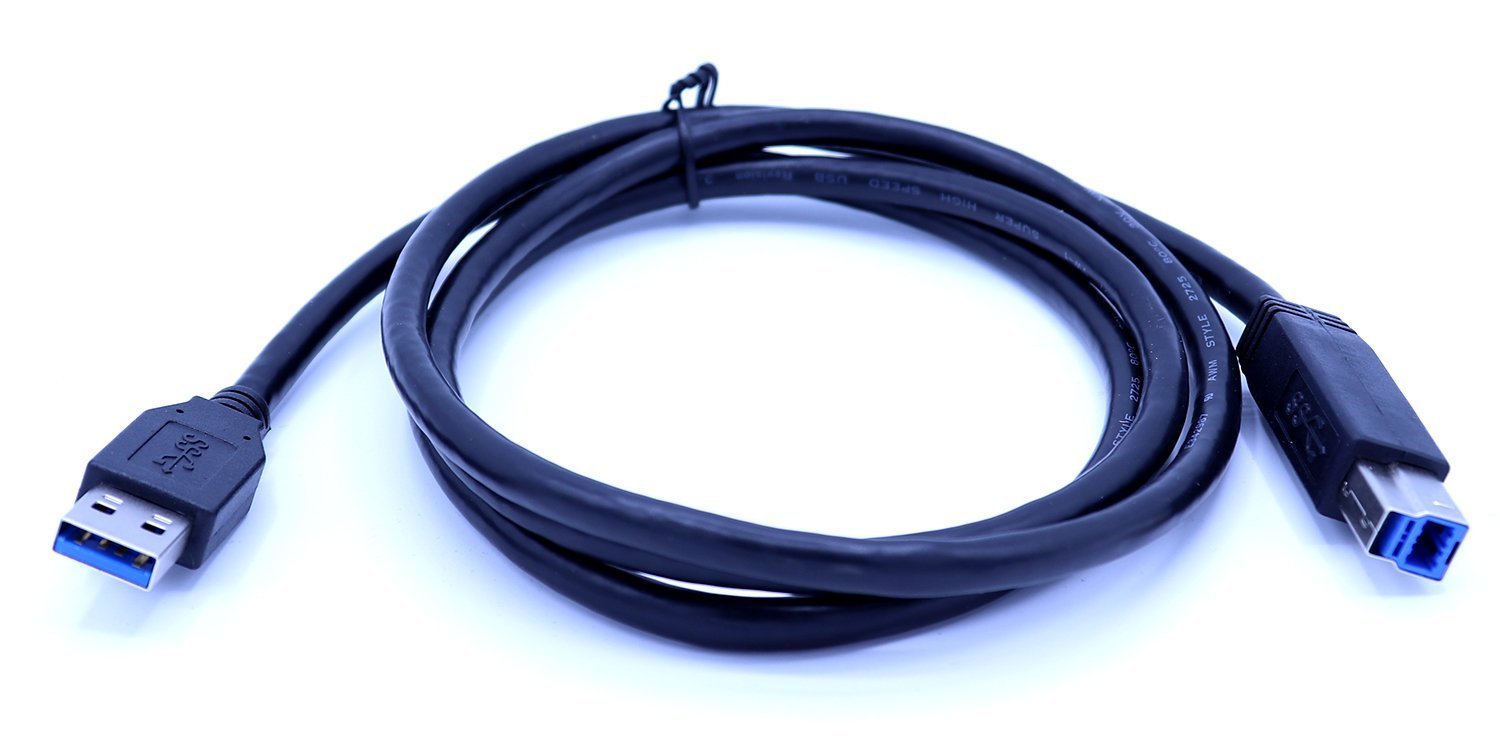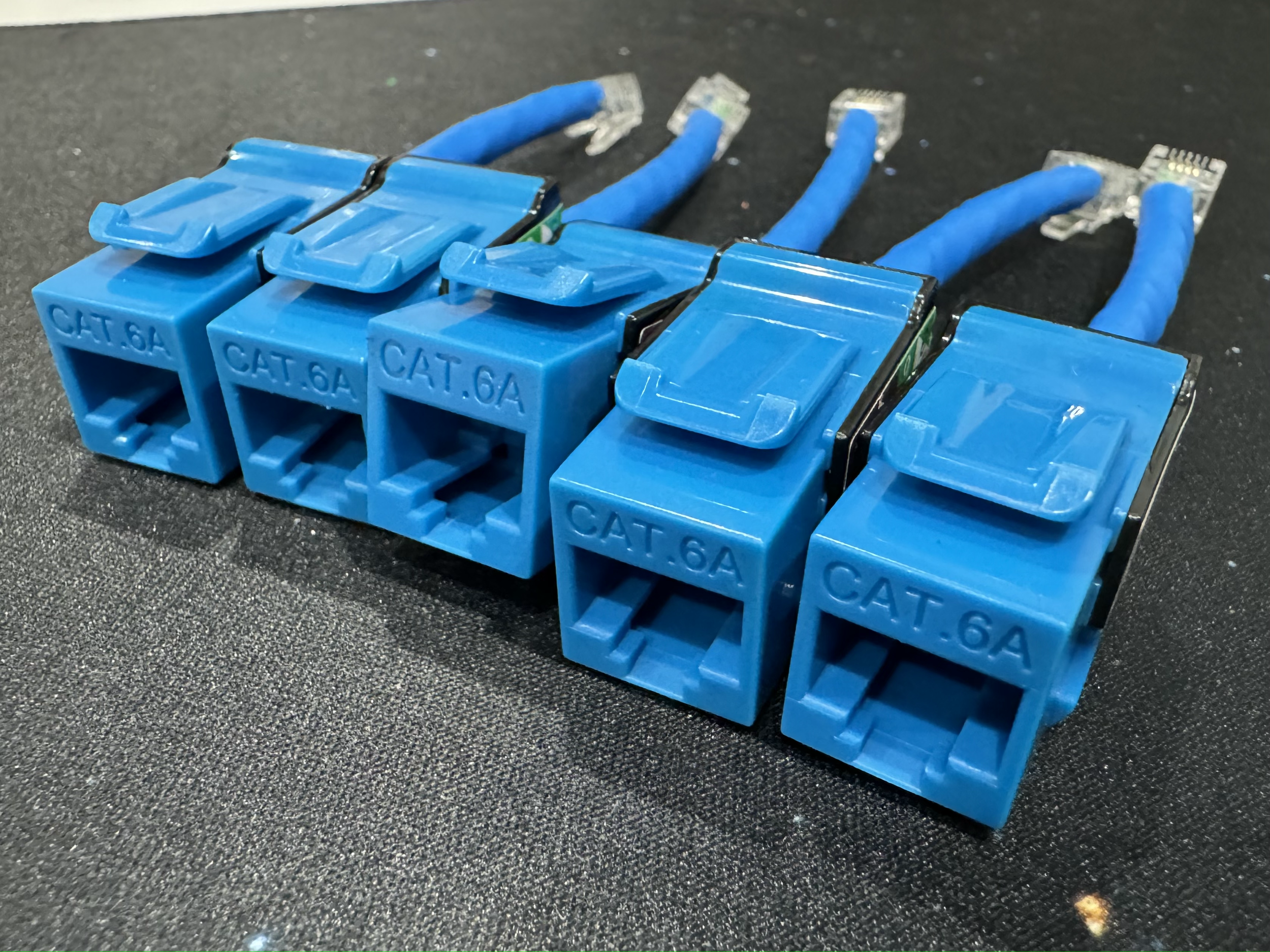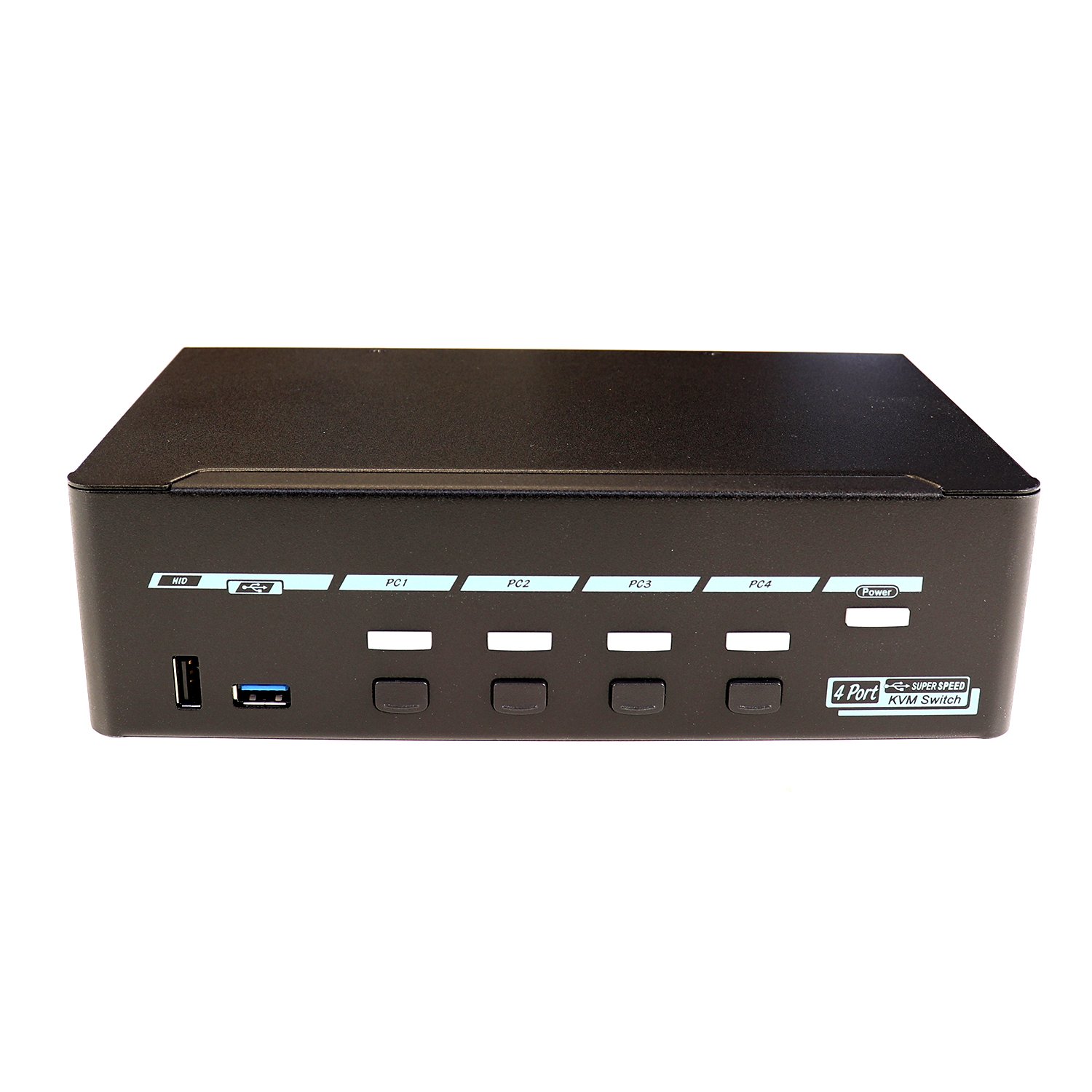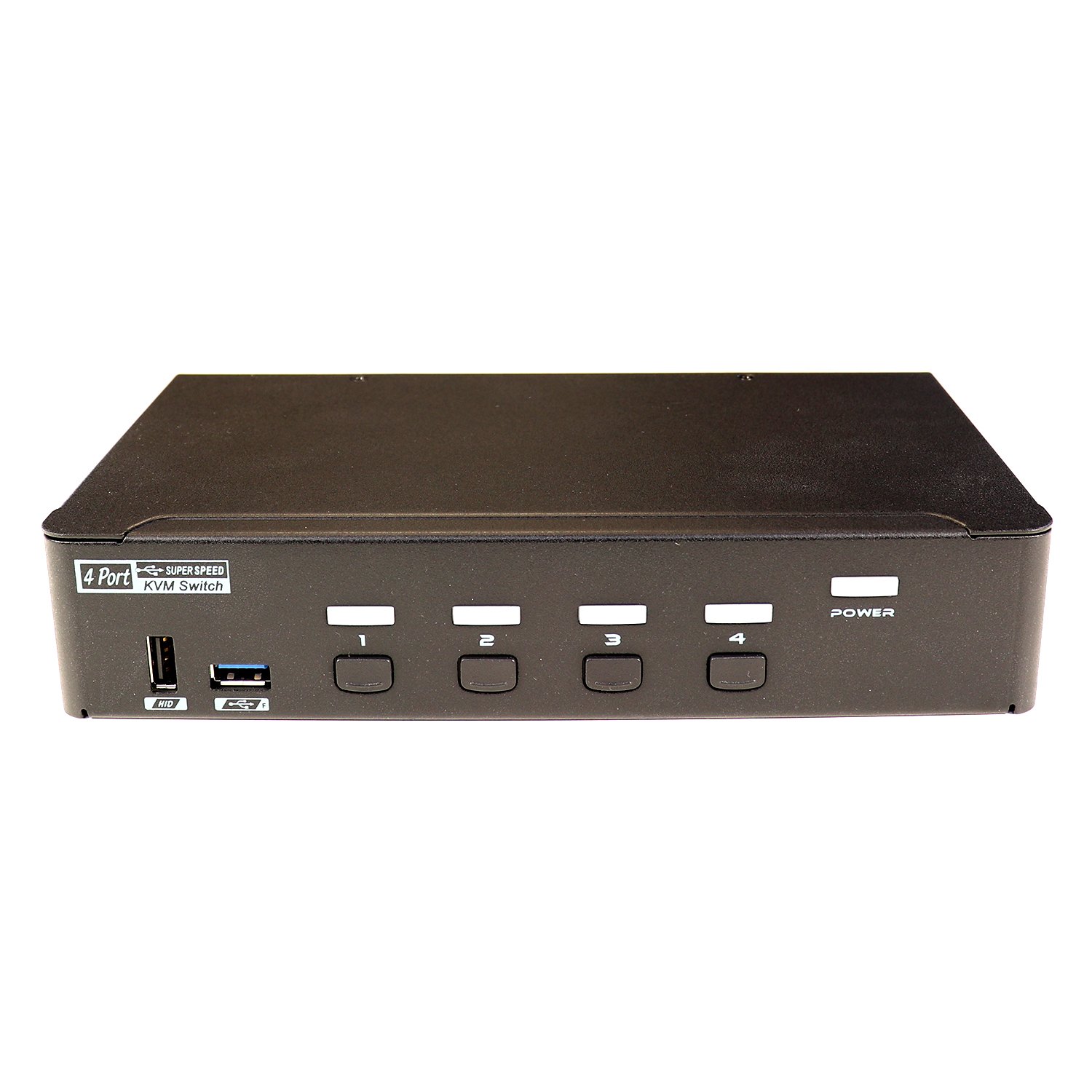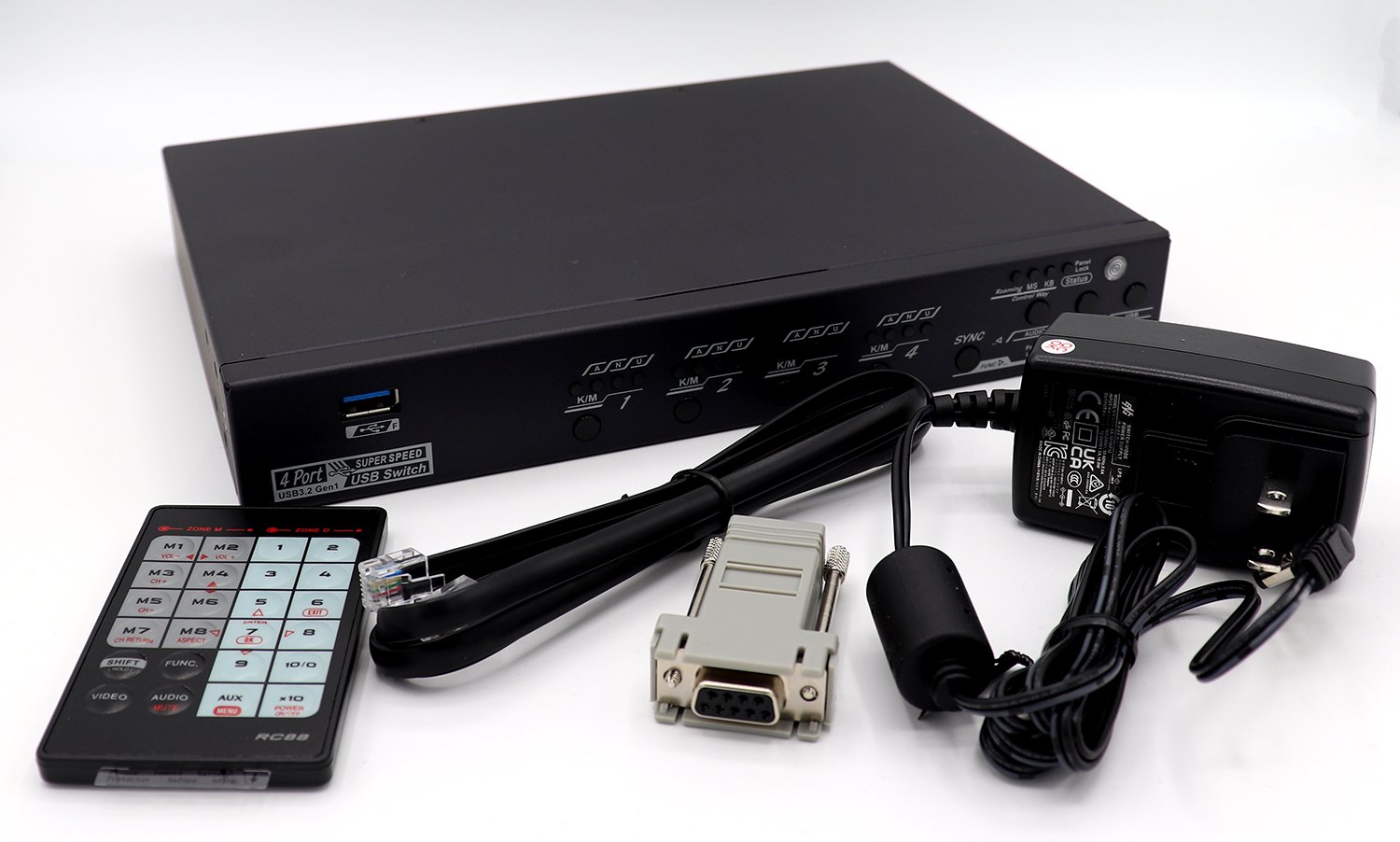Full-monitor-emulation KVM
This KVM is primarily for people that have work-from-home dumb terminals such as those from Amazon "Zero Client", Teradici thin clients and other solutions.
A lot of people working from home with employer "kit" find themselves using these types of terminals or interfaces and there are few, if any, KVMs on the market that work with this type of work-from-home kit.
Auto Learning Button
Projectors, Radiology displays, and other "special" devices that are DisplayPort, but not exactly, often do not quite respond all the time. The EDID Learning button at the back of the KVM will memorize an EDID at any point in time and then always present that EDID to the computer. This prevents the computer from "reacting" when a display is active or inactive and does not depend on any software solutions in the computer.
Power Adapter: Choice of UK, EU, and AU adapters.
Dimensions: 6.25”w x 4”d x 2.25”h (15.9 x 10.2 x 5.7 cm)
Warranty: One(1) year free parts and labor service warranty.
Rack Mount Kit: Not compatible with our Level One rack mount kit. KVM Rack Mount Kit not included
Rear:
Inputs:
2x 3.5mm Audio (may need a ground loop isolator)
4x DisplayPort 1.2
1x USB 3.0 "B" type (USB 3 5gbps, or USB 3.2 gen 1)
Outputs:
2x DisplayPort 1.2 connection
2x EDID Auto-learning push buttons
3x USB 2.0 Ports
1x analog 3.5mm audio
Front:
Push button for switching Inputs
1x USB 2.0 HID port
1x USB 3.0 "A" type (USB 3 5gbps, or USB 3.2 gen 1) ports (up to 1A current)
Box includes:
1x Power Adapter (Available with a choice of UK, EU, and AU adapters.)
2x USB 3.0 Super Speed A to B Cables (120 cm)
4x DisplayPort cables (120 cm)
For technical support or questions regarding KVMs and their accessories that are not answered in the product description or additional info section, please submit a support ticket.
Why Our KVM Switches Don’t Include an Ethernet Port
We often get asked why our KVM (Keyboard, Video, Mouse) switches don’t come with an Ethernet port. It’s a great question — and the answer has everything to do with keeping your network stable and your devices protected.
Our KVM switches are designed to cleanly switch control of your keyboard, video, and mouse — but networking is a different story. If we were to add an Ethernet port and try to switch it between devices, we’d essentially be reinventing something that already exists: a network switch.
Network switches are made to manage multiple devices on a shared network reliably and simultaneously. They handle traffic differently and are designed for constant connectivity — not for quick, manual switching like a KVM. Combining these two roles could lead to unnecessary complexity and reliability issues.
In short, we believe in using the right tool for the job. That’s why we leave networking to the dedicated Ethernet switches — and focus on building rock-solid KVMs that do their job well.
Background:
The reason I wanted to avoid /hardware monitor emulation is because it interferes with G-Sync/Freesync/FreeSync Pro. Unlike our other models it does NOT pass through any FreeSync/ FreeSync Pro/ G-Sync signals that happen to be on the DisplayPort wire.
If you have a need to have a game open but want to prevent the game from detecting the monitor has changed when the input has changed, then this KVM will also work for that scenario. We had several game developers using the DP1.4 KVM that have asked specifically for this feature to aid in game development.
Note that if only a few of your devices need this functionality, and not every device, you can also use the Level1Techs DP repeater to do full monitor emulation on a port-by-port basis.
This KVM effectively does the same thing, but with every input port, and internal to the KVM.
Important Usage Information: Corsair keyboards are currently unable to use KVM or KM hotkeys when plugged into HID ports.

